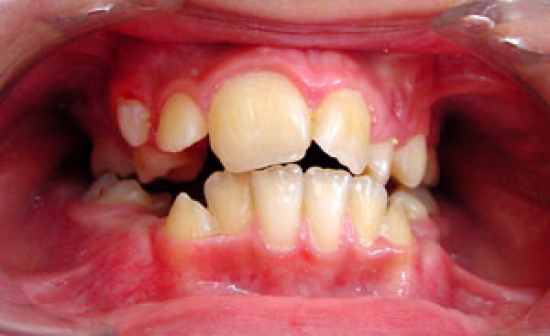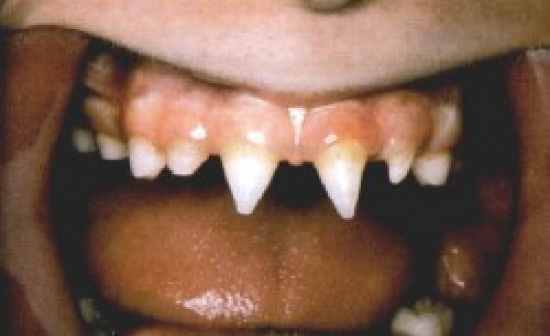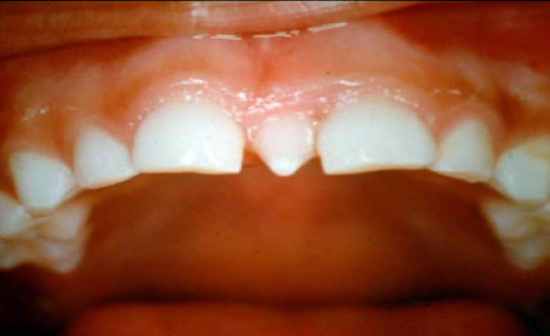Cards In This Set
| Front | Back |
|
Microdontia
|
-One or more teeth smaller than normal -True Generalized= all teeth uniformly smaller -Relative Generalized= Man and max are larger than normal, but teeth are normal size -most commonly affects lateral incisors and maxillary thirrd molars |
|
Macrodontia
|
 -One or more teeth that are larger than normal -True Generalized= All teeth uniformly larger -Relative Generalized= Man and Max are smaller than normal but teeth are normal size |
|
Anodotia
|
-Congenital absence of teeth
|
|
Anodotia- Total
- Ectodermal dysplasia |
 -Rare -Genetic -Hair Absent -Inability to regulate body temp. -usually not total ( Hypodontia or partial) |
|
Anodotia- Partial
|
-Absence of one or more teeth. - most common |
|
Supernumerary
|
 -More teeth than the normal number -90% in maxilla - Most common: ~mesiodens ~Maxillary 4th molars( paramolars) ~Max. lateral incisors - mandibular ~ Premolars |
|
Natal teeth
|
-Deciduous teeth that are present at birth
-Most commonly one or two teeth -most commonly mandibular central incisors |
|
Neonatal teeth
|
-1st thirty days of life
|
|
Delayed eruption
|
-Idiopathic or associated with Rickets, cleidocranial dysplasia -Gingival fibramatosis- dense fibrous connective tissue |
|
Impacted Teeth
|
Physical barriers- crowding, supernumerary teeth, odontogenic cyst and tumors Most common-3rd molars, max. cuspids, man. 2nd molars |
|
Dilaceration
|
- Sharp bend or angulation invloving the root |
|
Taurodontism
|
-Molar with an enlongated crown and apically placed furcation and enlarged, rectangular coronal pulpal chamber -results from damage to Hertwigs's sheath (determines shape) |
|
Atavism
|
-The tendency to revert to ancestral type. -Evolutional throwback, such as traits reappearing which had disappeared. |
|
Dens Invaginatus - Dens in dente
|
-deep enamel- lined pit that extends into the dentin
-Maxillary lateral incisors, max central incisors - causes- pulpitis, pulpal necrosis and inflammatory periapical disease |
|
Supernaumerary Cusp
(Cusp of Carabelli) |
-Mesiolingual of maxillary 1st molars
|



